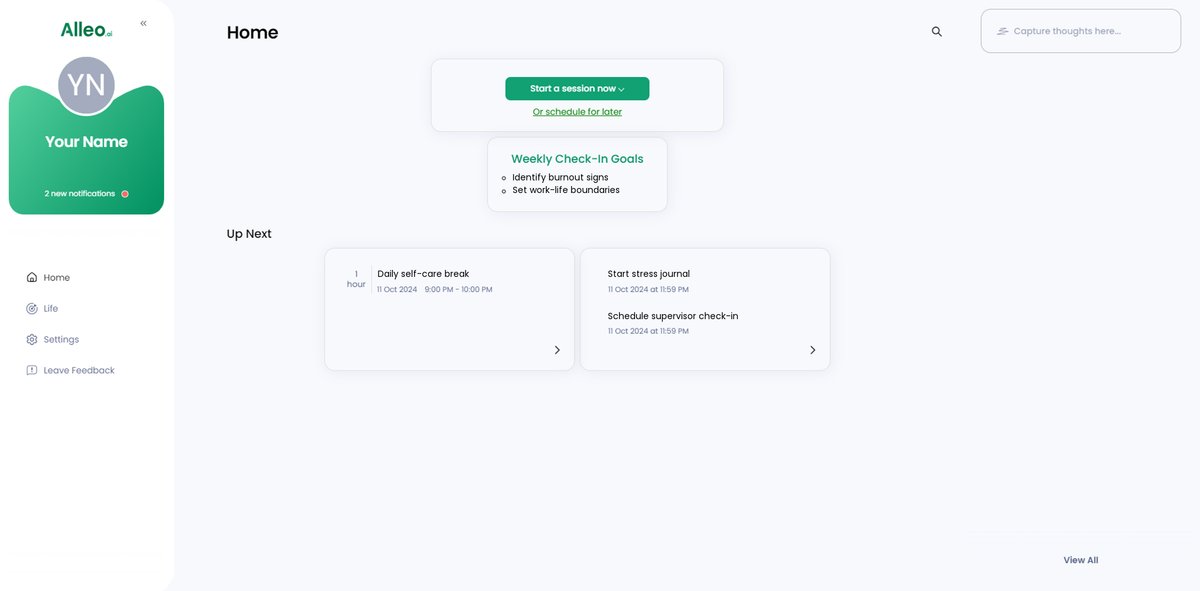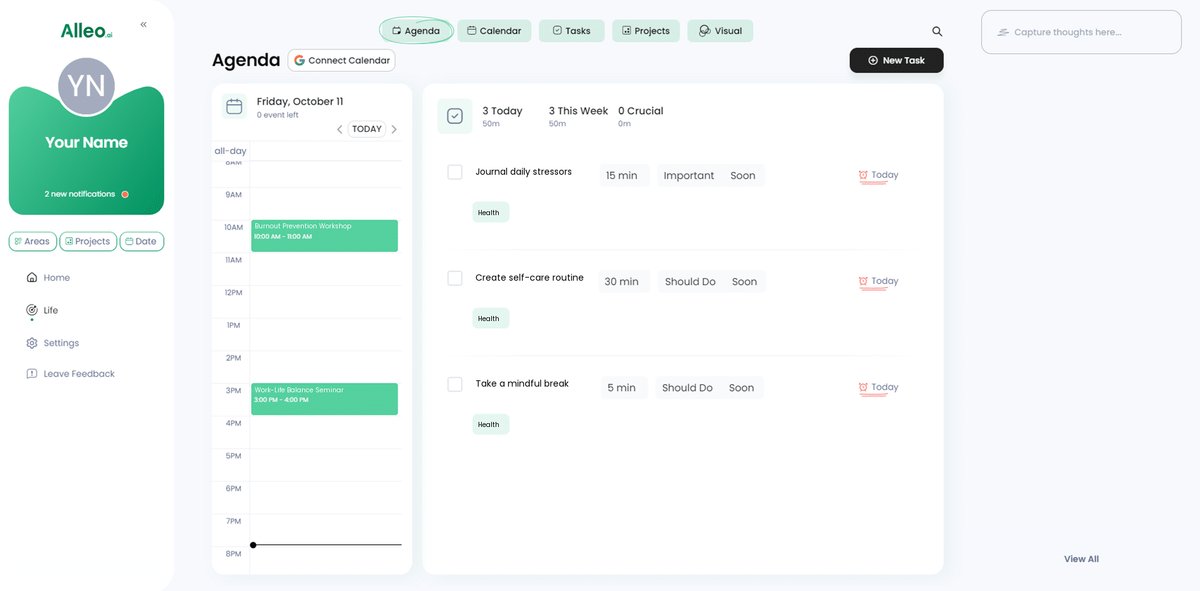6 Powerful Strategies for Healthcare Professionals to Recognize and Prevent Burnout at Work
Have you ever found yourself feeling exhausted, emotionally drained, and questioning your career? These could be warning signs of burnout in healthcare professionals.
As a life coach, I’ve seen many healthcare professionals struggle with these challenges. Often, they don’t realize they’re experiencing burnout until it severely affects their lives. Recognizing burnout warning signs early is crucial for preventing burnout in healthcare professionals.
In this article, you’ll learn strategies to recognize and prevent burnout. We’ll cover signs, solutions, and practical tips to help you maintain a healthy work-life balance. From stress management for professionals to self-care practices for employees, we’ll explore various workplace wellness programs and time management skills.
Let’s dive in and discover effective techniques for preventing burnout in healthcare professionals.
Understanding the Gravity of Burnout
Burnout manifests through physical, emotional, and mental exhaustion. Many healthcare professionals report feeling constantly fatigued, irritable, and disconnected from their work, which are key burnout warning signs.
These symptoms can be overlooked until they become overwhelming, highlighting the importance of preventing burnout in healthcare professionals.
Consider the stages of burnout:
- Honeymoon
- Onset of stress
- Chronic stress
- Burnout
- Habitual burnout
Each stage progressively worsens if not addressed. Early intervention is crucial.
Healthcare professionals face unique stressors. Long hours, emotional demands, and organizational pressures intensify burnout. Implementing workplace wellness programs and stress management for professionals can help mitigate these challenges.
Recognizing these challenges early can prevent severe consequences. Trust me, proactive steps like improving work-life balance techniques and self-care practices for employees make a significant difference in preventing burnout in healthcare professionals.

Your Roadmap to Overcoming Burnout
Preventing burnout in healthcare professionals and other workers requires a few key steps. Here are the main areas to focus on to make progress:
- Recognize early signs of burnout: Regular self-assessments and tracking stressors help identify burnout warning signs.
- Establish clear work-life boundaries: Set specific work hours and use technology to limit interruptions, enhancing work-life balance techniques.
- Practice daily self-care routines: Incorporate physical activities and mindfulness for professionals into your day.
- Seek support from colleagues and supervisors: Engage in regular check-ins and join peer support groups to improve job satisfaction.
- Implement stress-reduction techniques: Use deep breathing and time management skills to manage stress for professionals.
- Regularly reassess and adjust workload: Set realistic goals, delegate tasks, and review workload with supervisors as part of workplace wellness programs.
Let’s dive in!

1: Recognize early signs of burnout
Identifying burnout early is key to preventing its severe impact on your career and personal life. This is especially crucial for preventing burnout in healthcare professionals.
Actionable Steps:
- Conduct regular self-assessments: Take time weekly to reflect on your energy levels, mood, and job satisfaction, which are crucial for workplace wellness programs.
- Keep a journal: Track daily stressors and emotional responses to identify patterns and triggers, enhancing your emotional intelligence in the workplace.
- Attend workshops: Participate in training sessions on recognizing burnout warning signs and stress management for professionals.
Common early signs of burnout include:
- Persistent fatigue and low energy
- Increased irritability and cynicism
- Decreased productivity and motivation
Explanation:
These steps are vital to prevent burnout from escalating. Regular self-assessments and journaling help you stay aware of your mental state and recognize early signs of burnout, supporting work-life balance techniques.
Attending workshops offers valuable insights and tools for managing stress. According to the Wild Iris Medical Education, early intervention can significantly improve well-being.
Taking these steps can lead to a more balanced and fulfilling professional life, improving overall job satisfaction and promoting self-care practices for employees.
2: Establish clear work-life boundaries
Establishing clear work-life boundaries is crucial for preventing burnout in healthcare professionals and maintaining mental health.
Actionable Steps:
- Set specific work hours: Determine your working hours and stick to them, avoiding overtime whenever possible. This is a key time management skill for professionals.
- Create a designated workspace: Designate a specific area in your home for work to physically separate work from personal life, enhancing work-life balance techniques.
- Use technology to limit interruptions: Adjust email and notification settings to avoid work-related interruptions during personal time, an essential aspect of setting boundaries at work.
Explanation:
These steps help create a balance between work and personal life, reducing stress and preventing burnout in healthcare professionals.
Fixed work hours and a designated workspace help you mentally separate work from home. Limiting interruptions ensures personal time remains undisturbed, promoting relaxation and self-care practices for employees.
According to the Nonprofit Learning Lab, setting clear boundaries is vital for maintaining mental well-being and improving productivity.
Taking these steps can significantly enhance your work-life balance and aid in preventing burnout in healthcare professionals.
3: Practice daily self-care routines
Practicing daily self-care routines is essential for preventing burnout in healthcare professionals and maintaining mental health.
Actionable Steps:
- Schedule regular breaks: Take short breaks throughout your day to rest and recharge, which is crucial for work-life balance techniques.
- Incorporate physical activities: Add yoga, stretching, or walking to your daily routine for physical and mental benefits, enhancing stress management for professionals.
- Practice mindfulness: Engage in meditation or mindfulness exercises to manage stress and improve clarity, which are important self-care practices for employees.
Explanation:
These steps are crucial for maintaining a balanced lifestyle and preventing burnout in healthcare professionals.
Regular breaks help you stay refreshed, while physical activities and mindfulness for professionals reduce stress and improve overall well-being.
According to the National Career Development Association, a holistic self-care approach is vital for reducing burnout symptoms.
Taking these steps can significantly improve your daily well-being and resilience, contributing to job satisfaction improvement strategies.

4: Seek support from colleagues and supervisors
Seeking support from colleagues and supervisors is crucial for preventing burnout in healthcare professionals and managing stress effectively.
Actionable Steps:
- Engage in regular check-ins: Schedule weekly or bi-weekly meetings with a trusted colleague or supervisor to discuss workload, stress management for professionals, and burnout warning signs.
- Join peer support groups: Participate in or form groups where you can share experiences and work-life balance techniques with others facing similar challenges.
- Utilize employee assistance programs (EAP): Take advantage of professional counseling and mental health support services provided by your organization, which can help improve job satisfaction.
Benefits of seeking support include:
- Reduced feelings of isolation
- Improved problem-solving skills
- Enhanced workplace relationships and emotional intelligence in the workplace
Explanation:
These steps are essential for maintaining mental well-being and preventing burnout in healthcare professionals. Regular check-ins foster open communication and provide an opportunity to address stressors early, promoting better time management skills.
Peer support groups offer a sense of community and shared understanding. Utilizing EAPs provides professional assistance for managing stress and developing self-care practices for employees.
According to the Nonprofit Learning Lab, these support systems are vital for sustaining mental health and productivity in the workplace.
Taking these steps can significantly enhance your resilience and work-life balance, contributing to overall workplace wellness programs and helping in setting boundaries at work.

5: Implement stress-reduction techniques
Implementing stress-reduction techniques is essential for maintaining mental health and resilience in your demanding role, playing a crucial part in preventing burnout in healthcare professionals.
Actionable Steps:
- Practice deep breathing exercises: Spend five minutes daily on deep breathing or progressive muscle relaxation to lower stress levels and improve workplace wellness.
- Use time-management tools: Utilize apps or planners to prioritize tasks, enhance time management skills, and reduce the feeling of being overwhelmed.
- Engage in hobbies: Dedicate time each week to activities that bring you joy and relaxation, promoting work-life balance techniques.
Explanation:
These steps are crucial for managing stress and preventing burnout in healthcare professionals. Deep breathing exercises help manage immediate stress, while time-management tools streamline tasks, reducing anxiety and improving job satisfaction.
Engaging in hobbies provides a mental break and fosters a balanced life, which is key to self-care practices for employees. According to the CDC, managing stress effectively is key to maintaining mental health and productivity.
Taking these steps can significantly enhance your overall well-being and job satisfaction, contributing to effective stress management for professionals and preventing burnout in healthcare professionals.

Partner with Alleo to Overcome Burnout
We’ve explored the challenges of recognizing and preventing burnout in healthcare professionals. Did you know you can work directly with Alleo to make this journey easier and faster, improving job satisfaction and work-life balance?
Setting up an account with Alleo is simple. Create a personalized plan tailored to your needs, including stress management for professionals and time management skills.
The Alleo AI coach provides affordable, tailored coaching support, just like a human coach, focusing on workplace wellness programs and emotional intelligence in the workplace.
Alleo’s coach will follow up on your progress and help you make necessary changes. You’ll receive regular reminders and support via text and push notifications to keep you accountable, reinforcing self-care practices for employees and mindfulness for professionals.
Ready to get started for free? Let me show you how to begin preventing burnout in healthcare professionals!
Step 1: Log In or Create Your Account
To begin your journey towards overcoming burnout with personalized AI coaching, Log in to your account or create a new one to access Alleo’s tailored support and guidance.

Step 2: Choose Your Focus Area
Select “Improving overall well-being and life satisfaction” as your goal in the Alleo app to address burnout directly. This option aligns with the strategies discussed in the article and will help you develop a personalized plan to enhance your work-life balance and prevent exhaustion.

Step 3: Select “Health” as Your Focus Area
Choose “Health” as your primary focus area in the Alleo AI coach to address burnout effectively, as improving your physical and mental well-being is crucial for maintaining work-life balance and preventing exhaustion in your healthcare career.

Step 4: Starting a coaching session
Begin your journey with Alleo by scheduling an initial intake session, where you’ll discuss your burnout concerns and work together to create a personalized action plan tailored to your specific needs as a healthcare professional.

Step 5: Viewing and managing goals after the session
After your coaching session, check the Alleo app’s home page to view and manage the goals you discussed, helping you stay on track with your burnout prevention plan.

Step 6: Adding events to your calendar or app
Use the Alleo app’s calendar and task features to schedule and track your progress on burnout prevention activities, such as self-care routines, stress-reduction techniques, and regular check-ins with colleagues, helping you maintain a healthy work-life balance.

Taking the Next Step Towards a Balanced Life
As we wrap up, remember that recognizing and preventing burnout in healthcare professionals is a journey, not a one-time fix.
You now have strategies to identify early burnout warning signs, establish work-life boundaries, practice self-care practices for employees, seek support, reduce stress, and reassess your workload.
By taking these proactive steps, you can significantly improve your work-life balance techniques and overall well-being.
Don’t let burnout control your life. Start implementing these stress management for professionals strategies today.
And remember, Alleo is here to support you every step of the way with workplace wellness programs.
Try it for free and experience the difference personalized coaching can make in your life. Stay healthy, stay balanced, and improve your job satisfaction.